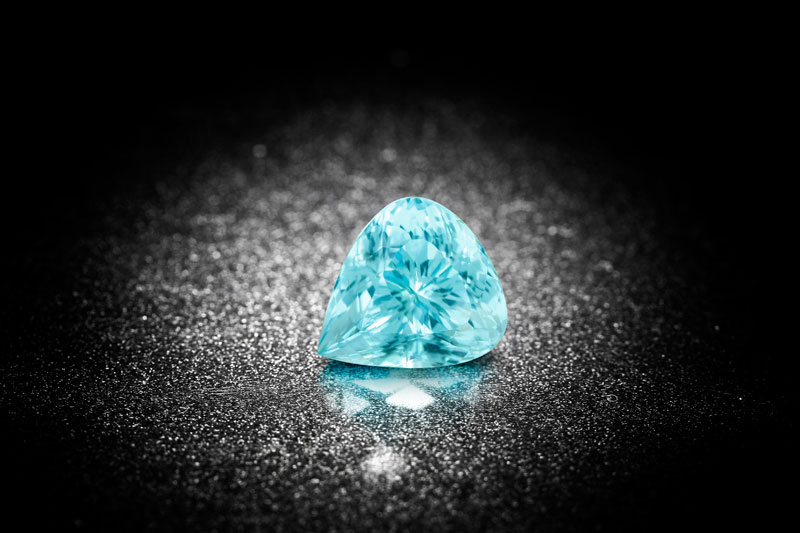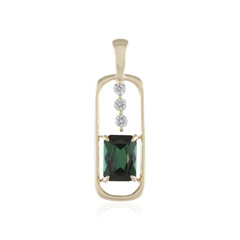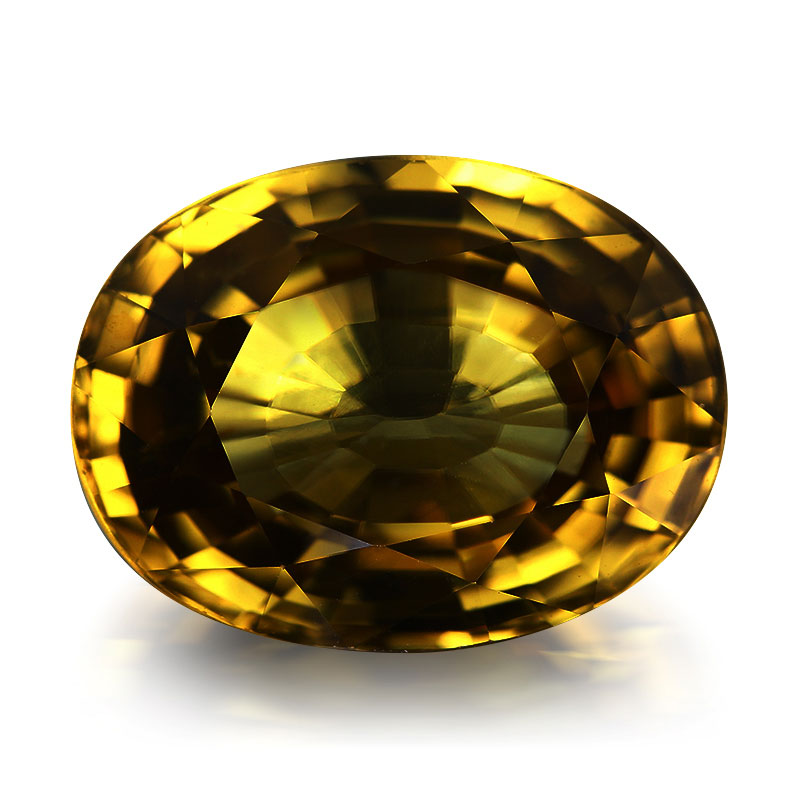
Naming of tourmaline
“Tourmaline“ refers to the variety of colours: "Tourmaline" is derived from the Sinhalese term "turmali" for "stone with mixed colours". It is also referred to as "chameleon gemstone", which refers not only to the diversity of its colours, but also to the historical confusion with other gemstones.
Chemical composition of tourmaline
Tourmalines form a group of related minerals whose different compositions produce the great wealth of colours. The mineral Elbaite forms the backbone of the tourmaline gemstones, which come in over 100 different shades. Unfortunately, the colourful tourmaline varieties are not available in abundance, so rarely is there suitable crystals formed which are suitable for processing into a piece of jewellery.
Origin of Tourmaline
Tourmalines are mined in Brazil, Afghanistan, Nigeria, Kenya, Tanzania, Madagascar, Malawi and Mozambique.
History of tourmaline
The popular gemstone has been in Europe since the 3rd century BC. it was often confused with other gemstones because of its colour variety.
Characteristics of Tourmaline
Due to its double refractive power, tourmaline is strongly pleochroic: this means that every tourmaline crystal has two colours (dark and light) whose intensity changes depending on the viewing angle.
Care of tourmaline
Tourmalines may be cleaned with steam, but not with ultrasound.
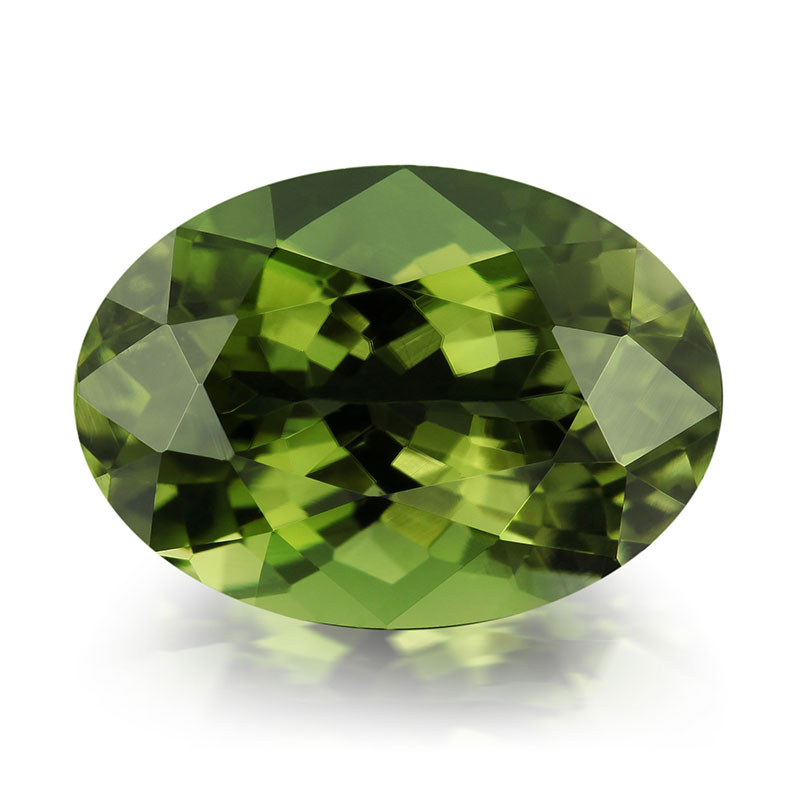
Tourmaline varieties
The different colours of tourmaline are referred to either by colour adjectives such as "cyan," "green" and "pink," by a special variety name, or by a suffix name. The Paraíba Tourmaline is named after the place of its discovery. Its colours range from Caribbean blue, peacock blue, copper green, neon aquamarine, swimming pool blue to turquoise blue. The Indigolite has an intense bright to deep neon blue and an impressive chandelier, it is also very pure and resistant. The Itatiaia Tourmaline and the Pirineu Tourmaline are blue-green tourmalines, both from the same Brazilian mine. However, they differ slightly in colour and their saturation: the Itatiaia tourmaline appears a bit more blue and colourful than the Pirineu tourmaline.
Chromium Tourmaline
The chromium tourmaline is an extremely rare variety of green tourmaline: it is intense green and is coloured by chromium and vanadium. Another green tourmaline is the santa rosa tourmaline from the same-named mine in Brazil, its colour reminiscent of the popular emerald. Named after its location is the Kunar Valley Tourmaline, the pieces found there are two-tone, mostly pink and green. Another multi-coloured tourmaline is the watermelon tourmaline, named for its visual similarity to the fruit. Here are the reds of rubellite surrounded by the green of a tourmaline, it is a real wonder of nature. This variety is from the Brazilian Cruzeiro mine, but it is difficult to find. Pink and green also merge in the multi-coloured tourmaline, which is obtained in West Africa. The Black Tourmaline shows an opaque black, occasionally with little traces of blue, brown or green. An impressive red characterizes the rare rubellite. High-quality specimens of Shimoyo in Mozambique, which are purple-red and pure, are named Shimoyo-Rubellites.
Bi Colour Tourmaline
Mentioned as a gemmological curiosity in early 20th-century texts, by the 70s Bi Colour Tourmaline was coveted as one of the rarest of all bicolour gems. Typically showing either a green and pink split or a brown and green split, combinations of apricot, blue, bluish-green, colourless, green and pink are also possible, sometimes with more than two colours in a single gem. Bi Colour Tourmaline's unique colours are down to environmental changes during formation due to the depletion of the trace elements that lend Tourmaline its plethora of colours. The problem with these disturbances during the gem's formation is that it results in inclusions that are usually eye visible. Eye-clean Bi Colour Tourmalines with the signature pink/green split are rarer than rare. Deliberately cut to accentuate their split personality, bicolour gems traditionally show a fairly even split of colour, but this paradigm is shifting. Don't confuse Bi Colour Tourmaline with Watermelon Tourmaline; this gem has a pink interior and green exterior, just like the fruit. Sources for Bi Colour Tourmaline include Afghanistan (Kunar Valley), Brazil, Madagascar, Mozambique and Nigeria.
Pink Tourmaline
-
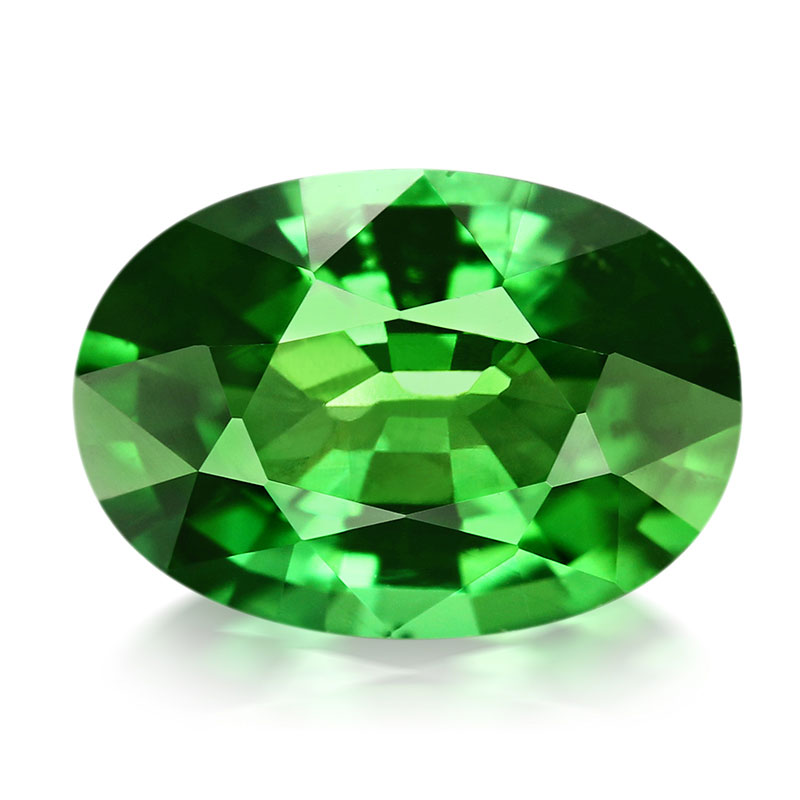
Chromium Tourmaline
-
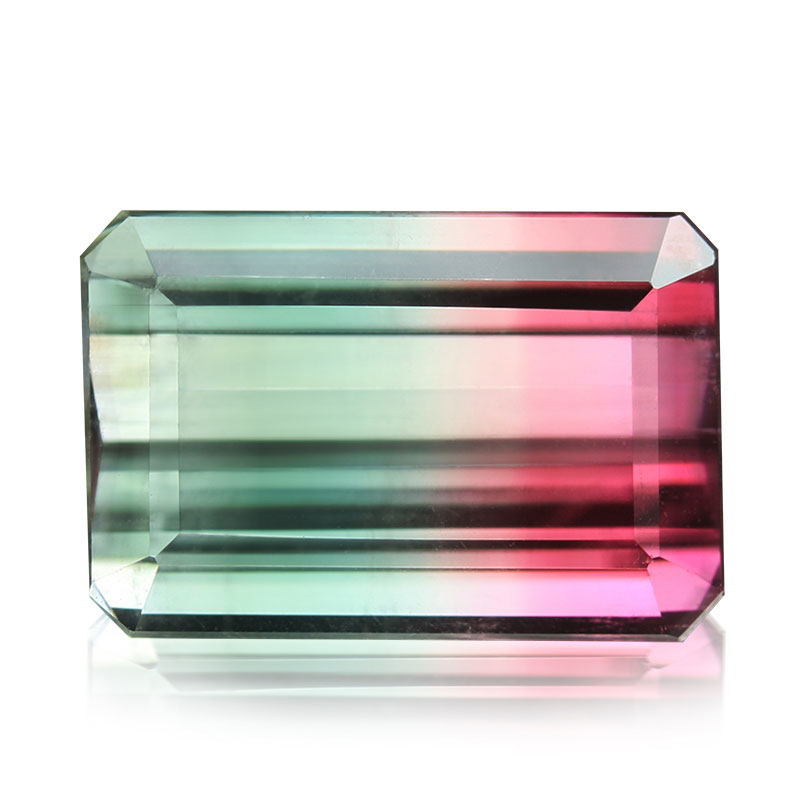
Bi Colour Tourmaline
-
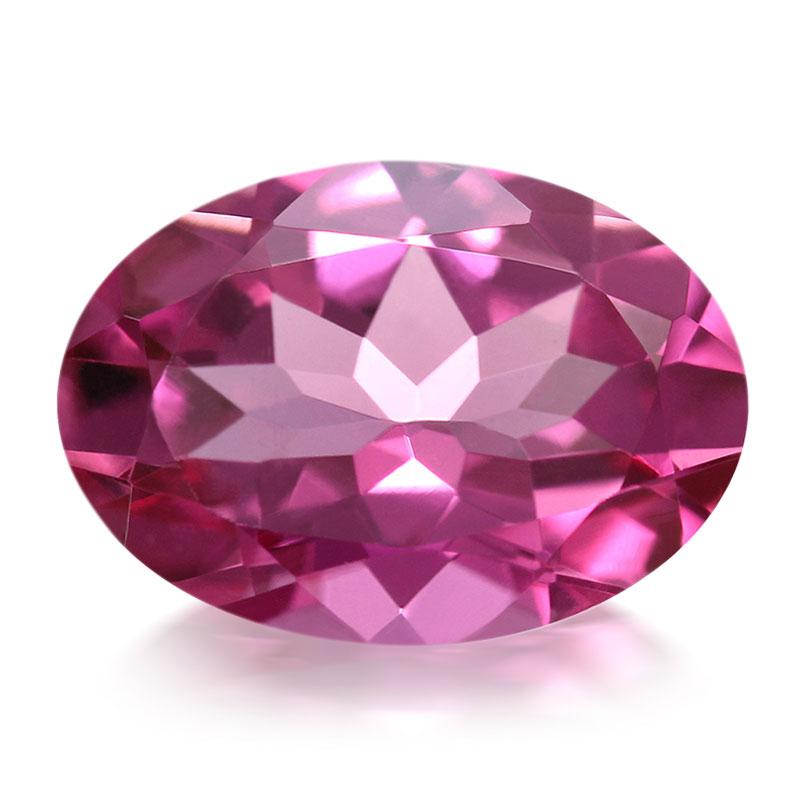
Pink Tourmaline

